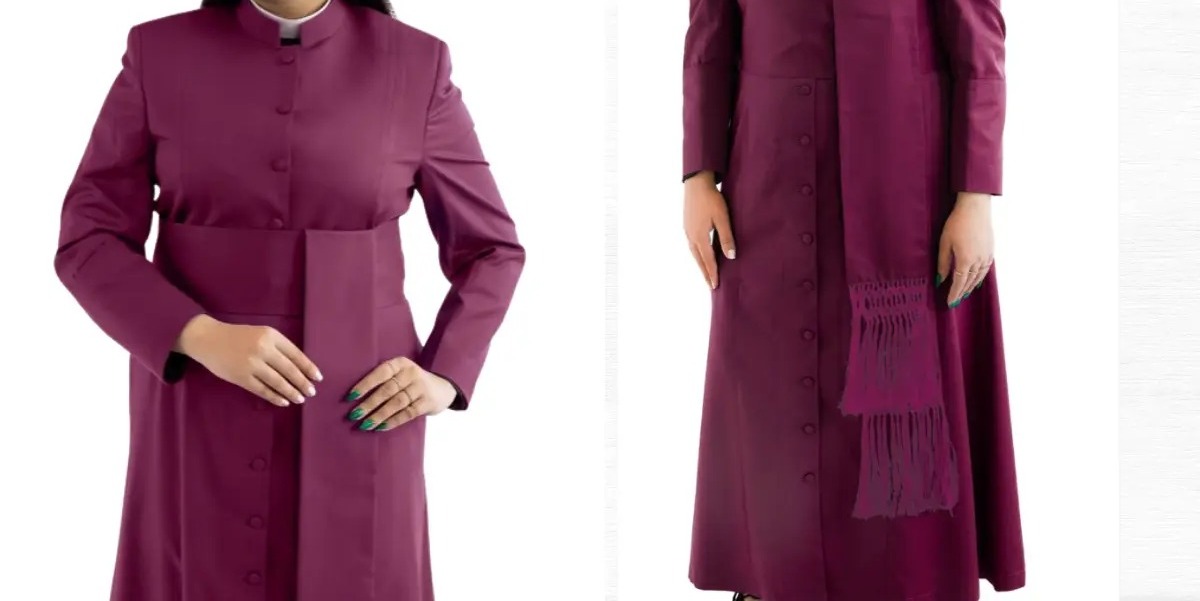Imagine walking into a place where everyone is supposed to feel equal and respected. Now, imagine being treated differently just because of what you wear. This is what many women clergy experience with their preaching robes. They face a unique challenge: their clothing is often under more scrutiny than their male counterparts. This article delves into why preaching robes for women are a topic of discussion and how these women navigate this landscape.
The Role of Preaching Robes
Preaching robes hold significant meaning in many religious traditions. These robes symbolize respect, authority, and a commitment to serving the community. For clergy members, both men and women, preaching robes are more than just garments; they represent their dedication to their faith and their role in guiding their congregations.
Why the Extra Scrutiny?
One might wonder why preaching robes for women receive extra scrutiny. The reasons are varied and often rooted in long standing traditions and societal expectations. Historically, religious leadership has been male-dominated. As more women step into these roles, their presence challenges traditional norms, including how they dress.
- Historical Gender Roles: Historically, many religious institutions were led by men. As women began to take on these roles, they brought with them a new perspective. However, with this new perspective came new scrutiny. Preaching robes for women are often analyzed more closely because they challenge the traditional image of a clergy member.
- Expectations and Standards: Society often holds women to different standards than men. This is evident in many areas, including clothing. Women clergy are expected to maintain a certain level of modesty and professionalism, which can sometimes lead to undue scrutiny of their preaching robes.
- Symbolism and Representation: For many, preaching robes symbolize more than just a uniform. They represent the values and beliefs of the religious institution. When women wear these robes, they are seen as representing not just themselves, but also the broader community. This can lead to increased attention and critique of their appearance.
Types of Preaching Robes for Women
Preaching robes for women come in various styles, each reflecting different traditions and personal preferences. Some common styles include:
- Classic Cassock: This is a long, flowing robe that is often black. It is a traditional choice for many clergy members and is known for its simplicity and elegance.
- Alb: An alb is a long, white robe that symbolizes purity. It is often worn with a cincture (a type of belt) and can be adorned with various religious symbols.
- Chimere: A chimere is a sleeveless robe that is often worn over a cassock. It is typically made of a lightweight fabric and can come in various colors.
- Surplice: This is a loose-fitting, white robe that is often worn over a cassock. It is known for its wide sleeves and is a common choice for many women clergy.
Challenges Women Face with Preaching Robes
The extra scrutiny that women clergy face regarding their preaching robes can lead to several challenges. These challenges can affect their confidence, comfort, and overall experience as leaders within their communities.
- Finding the Right Fit: Preaching robes for women need to fit well and be comfortable. However, finding robes that fit properly can be difficult. Many robes are designed with men in mind, which means women often have to make adjustments or have custom robes made.
- Balancing Tradition and Modernity: Women clergy often have to balance traditional expectations with modern sensibilities. This can be a delicate task, as they strive to honor their religious heritage while also expressing their individuality.
- Dealing with Criticism: Unfortunately, women clergy are often subject to criticism regarding their appearance. This can include comments on the style, fit, and appropriateness of their preaching robes. Such scrutiny can be disheartening and challenging to navigate.
Why Does It Matters?
The scrutiny of preaching robes for women is not just about clothing. It reflects broader issues of gender equality and respect within religious communities. By understanding and addressing these issues, we can work towards a more inclusive and supportive environment for all clergy members.
Supporting Women Clergy
Supporting women clergy in their choice of preaching robes is crucial. Here are a few ways that religious communities can offer their support:
- Encouraging Open Dialogue: Open discussions about the challenges women clergy face can help foster understanding and support. By talking openly about these issues, communities can work towards solutions that respect and honour all members.
- Offering Resources and Support: Providing resources, such as access to custom robe makers or financial support for purchasing robes, can help women clergy find preaching robes that fit well and meet their needs.
- Promoting Inclusivity: Encouraging a culture of inclusivity and respect within religious communities can help reduce the scrutiny faced by women clergy. This includes challenging stereotypes and promoting gender equality.
Conclusion
Preaching robes for women are more than just garments; they are symbols of faith, dedication, and leadership. The additional scrutiny that women clergy face regarding their preaching robes reflects broader societal issues of gender and equality. By understanding and addressing these challenges, religious communities can support their women leaders and work towards a more inclusive future. Let us appreciate the dedication and strength of women clergy and support them in their important roles. If you want to support your local women clergy, start by having open conversations and offering your help in any way you can.
